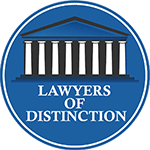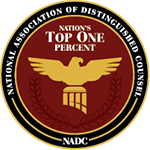Sex Trafficking
Sex trafficking is composed of two key aspects: human trafficking and sexual slavery. The two represent the supply and demand side of the sex trafficking industry, respectively. This exploitation is based on the interaction between the traffickers selling a victim (the individual being trafficked and sexually exploited) to customers to perform sexual services. These sex trafficking crimes are defined by three steps: acquisition, movement, and exploitation. The various types of sex trafficking are child sex tourism (CST), domestic minor sex trafficking (DMST) or commercial sexual exploitation of children, and prostitution.
NY State Penalties
A new N.Y. Penal Law Section §230.34 creates the crime of “Sex Trafficking.” A person commits this crime when he or she intentionally advances or profits from prostitution by:
- Providing the victim with certain drugs
- Making material false statements
- Withholding or destroying government identification documents
- Requiring repayment of a debt
- Using force or engaging in any scheme, plan or pattern to compel or induce such person to engage in prostitution by making that person fearful of one of eight actions or consequences against him or her such as:
- Cause physical injury, serious physical injury, or death to a person
- Cause damage to property, other than the property of the actor
- Engage in other conduct constituting a felony or unlawful imprisonment in the second degree in violation of section 135.05 of this chapter
- Accuse some person of a crime or cause criminal charges or deportation proceedings to be instituted against some person; provided, however, that it shall be an affirmative defense to this subdivision that the defendant reasonably believed the threatened charge to be true and that his or her sole purpose was to compel or induce the victim to take reasonable action to make good the wrong which was the subject of such threatened charge
- Expose a secret or publicize an asserted fact, whether true or false, tending to subject some person to hatred, contempt or ridicule
- Testify or provide information or withhold testimony or information with respect to another’s legal claim or defense
- Use or abuse his or her position as a public servant by performing some act within or related to his or her official duties, or by failing or refusing to perform an official duty, in such manner as to affect some person adversely
- Perform any other act which would not in itself materially benefit the actor but which is calculated to harm the person who is patronized materially with respect to his or her health, safety, or immigration status.
N.Y. Penal Law §230.34 makes the crime of “Sex Trafficking” a Class B felony, with a maximum sentence of 25 years imprisonment. In addition, a court may order a defendant to pay a fine of $5,000 or double the defendant’s gain from the commission of the crime. A new N.Y. Penal Law §230.36 provides that a victim of “Sex Trafficking” is not an accomplice of the trafficker.
Changes to the Penal Law Relating to Prostitution
N.Y. Penal Law §230.25, “Promoting Prostitution in the 3rd Degree,” is amended to include the selling of traveled-related services, knowing that such services include or are intended to facilitate travel for the purpose of patronizing a prostitute. Repeals N.Y. Penal Law §230.03, “Patronizing a Prostitute in the 4th Degree,” and amends §230.04 to make the lowest level of “Patronizing a Prostitute” a Class A misdemeanor.
New York Penal Law §230.36 – Sex Trafficking Accomplice Liability
In a prosecution for sex trafficking, a person from whose prostitution activity another person is alleged to have advanced or attempted to advance or profited or attempted to profit shall not be deemed to be an accomplice.
Difference between State & Federal statutes
The federal government has taken a firm stance against human trafficking both within its borders and beyond.
Domestically, human trafficking is a federal crime under Title 18 of the United States Code. Section 1584 makes it a crime to force a person to work against her or his will, or to sell a person into a condition of involuntary servitude. Section 1581 similarly makes it illegal to force a person to work through “debt servitude”. Human trafficking as it relates to involuntary servitude and slavery is prohibited by the 13th Amendment. Federal laws on human trafficking are enforced by the Federal Bureau of Investigation, the United States Marshal Service, the Drug Enforcement Administration, the Immigration and Customs Enforcement, the United States Department of Justice Civil Rights Division and Criminal Section, and other federal agencies.
Several state governments have taken action to address human trafficking within their borders, through either legislation or prevention activities. For example, Florida state law prohibits forced labor, sex trafficking, and domestic servitude and provides for mandatory law enforcement trainings and victim services. A 2006 Connecticut law prohibits coerced work and makes trafficking, a violation of the Connecticut RICO Act. Washington State was the first to pass a law criminalizing human trafficking in 2003. The New York State Anti-trafficking law was created in 2007. It created the crimes of Labor Trafficking and Sex Trafficking, provides immunity for victims and gives benefits and services to the victims. New York State Safe Harbor for Exploited Children Act was created in 2008. It gives exploited children protection from the Family Court and access to services.
Related Crimes
Trafficking in persons should be understood as a process rather than as a single offence. It begins with the abduction or recruitment of a person and continues with the transportation and entry of the individual into another location. This is followed by the exploitation phase, during which the victim is forced into sexual or labor servitude or other forms of exploitation. A further phase may occur, which does not involve the victim but rather the offender. Depending upon the size and sophistication of the trafficking operation, the criminal (organization) may find it necessary to launder the proceeds of crime. During the trafficking process, the offenders usually perpetrate a number of different offences. There may be linkages between trafficking operations and other criminal offences such as the smuggling of weapons or drugs. Offences are also committed in furtherance or protection of the human trafficking operation. Other crimes, such as money-laundering and tax evasion, are secondary, but essential to protect the illicit proceeds of the trafficking activity.
Successful Defenses
Sexually exploited youth are often arrested for prostitution and other trafficking-related offenses. In response, states are focusing on addressing youth as victims and taking steps to prevent arrested or previously convicted young people from being treated as criminals by the justice system. Actions taken by states include providing immunity from prosecution for certain offenses by minors, creating an affirmative defense to criminal charges for trafficked victims, providing for the pretrial diversion of trafficked youth and creating procedures to clear trafficking related criminal convictions from victim’s records. At least 19 states enable an individual charged with prostitution-related offenses to assert as an affirmative defense, that their actions were the result of being victimized by human trafficking.
In 2014, Arizona, Iowa, Kentucky, Louisiana and Maine created an affirmative defense to certain criminal charges for trafficked victims. At least six states—Illinois, Mississippi, Nebraska, North Carolina, Tennessee and Vermont—make all minors immune from prosecution for prostitution; some extend that immunity to related offenses such as pandering, trafficking and procuring prostitutes.
In Connecticut, children ages 15 and under are immune from prosecution for prostitution. For 16- and 17-year-olds charged with prostitution, the statute creates a rebuttable presumption that they are victims of trafficking for the purpose of raising an affirmative defense. Once identified as a minor, these laws usually require officials to notify appropriate agencies for protective services. Some states enable minors charged with prostitution and related offenses to be diverted to pretrial programs at the discretion of justice officials.
For example, Washington’s law enables prosecutors to divert first time juvenile offenders into programs that provide safe housing, chemical dependency treatment, trauma treatment, employment training and other services. The law also requires data collection for the number of juveniles diverted and their rate of recidivism.
In 2014, New York, Ohio and Utah enacted laws to divert certain trafficked youth from the justice system. New York’s law allows judicial officials to convert prostitution and loitering charges for 16- and 17-year-olds into “person in need of supervision” cases, enabling protective services to be provided. Ohio’s law now enables justice officials to accept a defendant’s request for intervention in lieu of conviction if being trafficked was a leading factor in their criminal behavior. Utah’s new law requires police to refer certain trafficked youth to the Division of Child and Family Services.
At least 15 states enable victims who have previously been convicted of prostitution or related offenses to petition to have their conviction record cleared. These laws provide standards for submitting requests to vacate expunge or seal certain convictions and standards for justice officials to grant or deny the request. These laws help victims remove criminal records that can make it challenging for them to get a job get credit and attain housing.
High profile/Government cases
In December 2008, Corey Davis, the ringleader of a sex-trafficking ring that spanned at least three states, was sentenced in federal court in Bridgeport, Connecticut, on federal civil rights charges for organizing and leading the sex-trafficking operation that exploited as many as 20 females, including minors. Davis received a sentence of 293 months in prison followed by a lifetime term of supervised release. He pleaded guilty to multiple sex-trafficking charges, including recruiting a girl under the age of 18 to engage in prostitution. Davis admitted that he recruited a minor to engage in prostitution; that he was the organizer of a sex-trafficking venture; and that he used force, fraud, and coercion to compel the victim to commit commercial sex acts from which he obtained the proceeds.
According to the indictment, Davis lured victims to his operation with promises of modeling contracts and a glamorous lifestyle. He then forced them into a grueling schedule of dancing and performing at strip clubs in Connecticut, New York, and New Jersey. When the clubs closed, Davis forced the victims to walk the streets until 4 or 5 a.m. propositioning customers. The indictment also alleged that he beat many of the victims to force them to work for him and that he also used physical abuse as punishment for disobeying the stringent rules he imposed to isolate and control them.








